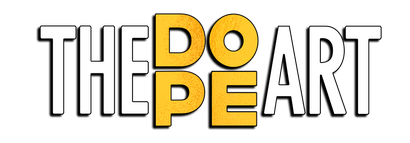Your Cart is Empty
FREE SHIPPING ON ORDERS OVER $100 in the U.S.
FREE SHIPPING ON ORDERS OVER $100 in the U.S.
Appreciating the Aesthetics of a Skull in Painting
March 01, 2023 5 min read
The Beauty in Death: How Skulls Became a Timeless Subject in Art History
Death has been a fascinating subject in human history for as long as humans have existed. It is a universal experience that connects all living beings. Art, being a reflection of the society it is created in, has always found ways to explore and represent death in various forms. One of the most intriguing representations of death is the skull. Skulls have been used in art for centuries and have become a timeless subject that continues to inspire artists today. In this article, we will explore the beauty in death and how skulls have become a symbol of it in art history.
The History of Skulls in Art
Skulls have been used in art for centuries, and their history goes back to prehistoric times. Let's take a brief look at how skulls have been used in art throughout history.
Skulls in Prehistoric Art
Skulls have been found in various prehistoric art forms. The most famous example is the cave paintings in Lascaux, France, which date back to around 17,000 years ago. These paintings feature images of animals and humans, and some of them include skulls. Prehistoric humans likely saw skulls as a symbol of death and the afterlife.
Skulls in Ancient Art
Skulls were also used in ancient art, particularly in Egyptian and Aztec cultures. In Egyptian art, skulls were used as a symbol of the afterlife and the journey to the underworld. In Aztec culture, skulls were used in religious ceremonies and were considered a symbol of life and rebirth.
Skulls in Medieval Art
In medieval art, skulls were often used in religious paintings as a symbol of mortality and the transience of life. They were also used in memento mori art, which we will discuss in more detail later.
Skulls in Renaissance Art
In the Renaissance period, skulls became even more popular in art. They were often used in vanitas paintings, which we will also discuss later. Famous artists such as Caravaggio and Hans Holbein the Younger used skulls in their paintings.
The Symbolism of Skulls in Art
Skulls have been used in art to convey various meanings, depending on the context in which they are used. Let's explore some of the most common symbolism associated with skulls in art.
Vanitas Art
Vanitas art was popular in the 16th and 17th centuries, particularly in the Netherlands. It featured still life paintings with objects that symbolized the fleeting nature of life, including skulls, hourglasses, and extinguished candles. The skulls represented the inevitability of death and the transience of life.
Memento Mori
Memento mori is a Latin phrase that translates to "remember that you will die." This phrase and the associated symbolism were commonly used in medieval and Renaissance art. Memento mori art featured skulls, hourglasses, and other symbols of mortality to remind viewers of their own mortality and the importance of living a virtuous life.
Celebration of Life
In some cultures, skulls are used as a symbol of celebration and life. For example, in Mexico, skulls are used in the Day of the Dead festival, which celebrates the lives of deceased loved ones. The festival features skull masks, sugar skulls, and other skull-themed decorations.
Skulls in Contemporary Art
Skulls continue to inspire artists today, and they are a common subject in various contemporary art forms. Let's explore some of the ways skulls are used in contemporary art.
Skull Street Art
Street artists often use skulls in their work to create provocative and thought-provoking pieces. For example, the street artist Banksy has used skulls in several of his works, including "Death of a Phone Booth" and "Kate Moss."
Skull Pop Art
Pop artists, such as Andy Warhol and Keith Haring, have also used skulls in their work. Warhol's "Skulls" series features brightly colored skull prints, while Haring's "Pop Shop" featured skull-themed merchandise.
Skull Tattoo Art
Skull tattoos are a popular subject in tattoo art. They are often used to symbolize rebellion, danger, or mortality. Skull tattoos can range from simple black and white designs to intricate and colorful pieces.
The Skull in Painting
During the Renaissance period in Europe, the skull emerged as a symbol in painting, mainly in the exploration of the theme of vanitas. The concept of vanitas refers to the ephemeral and fleeting nature of life, and artists represented this idea by including symbols of mortality and decay, such as skulls and hourglasses in their paintings.
The skull, in particular, became a highly popular motif in vanitas paintings, representing the inevitability of death and the fleeting nature of life. It became a powerful symbol that reminded people of their mortality and urged them to live life to the fullest while they still could.
One of the most iconic examples of the skull in painting is "The Ambassadors" by Hans Holbein the Younger, created in 1533. The painting features a distorted skull in the foreground, meticulously detailed to create a sense of tension and unease in the viewer. Holbein masterfully used the skull to symbolize the theme of mortality and the fleeting nature of life, which is the central idea of vanitas.
FAQ
Q: What is the significance of skulls in art?
A: Skulls have been used in art to convey various meanings, including mortality, the afterlife, and the celebration of life.
Q: What is vanitas art?
A: Vanitas art is a genre of still life painting that features objects symbolizing the fleeting nature of life, including skulls, hourglasses, and extinguished candles.
Q: What is memento mori?
A: Memento mori is a Latin phrase that translates to "remember that you will die." It is often associated with medieval and Renaissance art and features symbols of mortality, such as skulls and hourglasses.
Q: What is the Day of the Dead festival?
A: The Day of the Dead festival is a Mexican holiday that celebrates the lives of deceased loved ones. It features skull masks, sugar skulls, and other skull-themed decorations.
Q: How are skulls used in contemporary art?
A: Skulls continue to inspire artists today, and they are a common subject in various contemporary art forms, including street art, pop art, and tattoo art.
Jesse Johnson - Skull Artist
Jesse Johnson, the artist behind TheDopeArt.com, is known for his unique and creative use of the skull motif in his artwork. Johnson's artistic style is a fusion of street art and traditional painting techniques, resulting in a distinctive and visually striking aesthetic.
One of Johnson's signature techniques is his use of bright, bold colors that contrast with the dark and ominous imagery of the skulls in his paintings. His artwork explores various themes, including mortality, spirituality, and the human condition. His use of the skull as a central motif represents the concept of memento mori, or "remember that you will die," which is a theme that has been prevalent in art throughout history.
Subscribe
Sign up to get the latest on sales, new releases and more …
Size Charts












